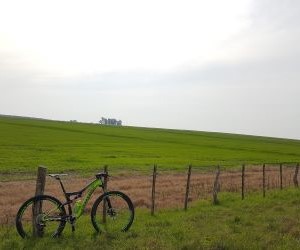Learn how to deal with punctures on long rides with prevention tips, repair techniques, and smart gear choices to keep rolling without stress.
HOW DO I CHOOSE THE RIGHT CYCLING SOCKS?
Cycling socks aren’t just about looks—they’re a small gear choice that can have a big impact on your performance and comfort. The right pair regulates temperature, manages moisture, prevents blisters, and even improves aerodynamics. But with so many options out there—from compression styles to lightweight mesh—it’s easy to get lost. This guide helps you choose the right cycling socks by breaking down the key factors like fabric technology, seasonal needs, fit, and length. Whether you're racing, commuting, or tackling endurance events, sock choice matters more than you think.

Understand sock materials and breathability
The most critical aspect of cycling socks is the material. Your socks need to manage heat, wick moisture, and dry quickly—all while maintaining comfort under high cadence and varying conditions. Unlike cotton socks, which absorb sweat and cause blisters, performance cycling socks use technical fibers engineered for breathability and stretch.
Popular materials include nylon, polyester, merino wool, and proprietary blends like Coolmax® or Dryarn®. Each comes with specific advantages. For instance, nylon offers durability and a snug fit, while merino excels in temperature regulation and odor control, especially for longer or colder rides.
Top performance sock fabrics
Nylon: Lightweight, strong, and moisture-wicking
Polyester: Breathable and quick-drying
Merino Wool: Naturally insulating and antibacterial
Elastane/Spandex: Adds stretch for compression and fit
Coolmax®: Designed for hot weather and high moisture transfer
For hot climates or summer races, go with ultra-light synthetic blends that allow ventilation and keep your feet dry. In contrast, winter riders should look for wool-based blends that insulate even when wet. Pay attention to mesh zones on the top of the sock—they’re a small feature with major benefits in airflow.
When shopping, don’t just go by looks. Read the label or product specs to understand the fiber composition. Breathability is often what separates a blister-free ride from a painful one.
Find the right fit and compression
Fit is everything when it comes to cycling socks. An ill-fitting sock—too loose or too tight—can lead to hotspots, pressure points, and constant mid-ride adjustments. A well-fitting sock should feel snug without cutting off circulation, hugging your foot without bunching or slipping inside the shoe.
Modern cycling socks often include light compression features, especially around the arch and ankle. Compression improves circulation, reduces swelling on long rides, and helps with muscle recovery. However, too much compression can become restrictive, so balance is key.
How to choose the best fit
Look for seamless toe construction to avoid irritation
Check for compression zones in the mid-foot and cuff
Avoid socks with bulky seams or thick weaves
Use size charts—don’t assume “one size fits all”
Test socks in your cycling shoes, not just sneakers
Sock height also affects performance and comfort. Ankle-length socks may work for short rides or triathlons, but mid- to high-cuff socks (6–8 inches) are preferred for road cycling due to added protection, compression benefits, and improved aerodynamics. UCI regulations even address sock height in pro races, which speaks to its impact.
If you suffer from foot fatigue or swelling on long rides, consider a cycling-specific compression sock with graduated pressure. It’s a subtle upgrade that makes a huge difference over time.
Match sock choice to conditions
Cycling socks aren’t one-size-fits-all when it comes to conditions. The season, ride duration, terrain, and even altitude can influence the best sock for the job. Matching your sock to the weather and riding demands will keep your feet comfortable, blister-free, and optimally supported.
In summer, opt for ultra-light mesh socks with minimal padding. These allow your feet to breathe and reduce the risk of overheating. Look for anti-odor technology like silver-ion fibers or merino blends that naturally combat bacteria.
For wet rides, waterproof or water-resistant socks can keep your feet warm and dry. Brands like Sealskinz or Showers Pass offer high-tech options for rain conditions. Meanwhile, winter demands thermal insulation—go with merino wool socks or insulated synthetics with tight cuffs to lock in warmth.
Choosing socks by conditions
Hot weather: Breathable mesh + anti-odor yarns
Cold weather: Merino wool or insulated synthetics
Wet weather: Waterproof or hydrophobic materials
Endurance rides: Compression + moisture-wicking blend
Race day: Lightweight aero-cut with snug cuff
Remember to always test your socks during training—not on race day. A sock that feels perfect on a 30-minute spin might not hold up for 100km of variable terrain.
Good cycling socks are a performance tool. When chosen wisely, they can reduce fatigue, prevent discomfort, and even give you a psychological edge. Never underestimate what a dialed-in pair can do for your ride.
YOU MAY ALSO BE INTERESTED






